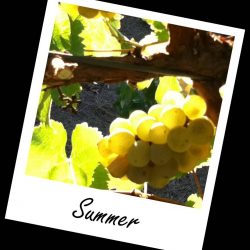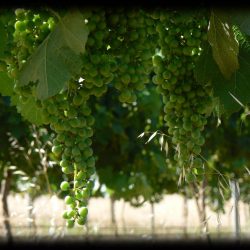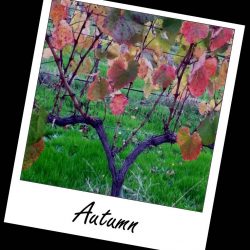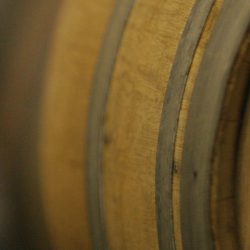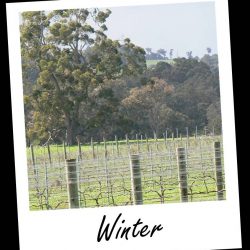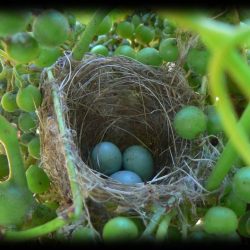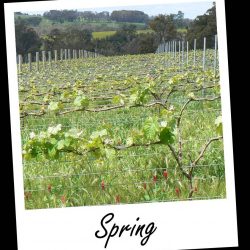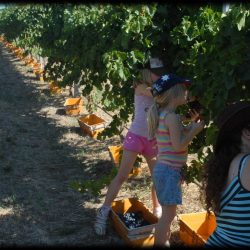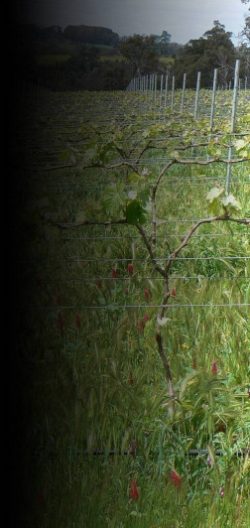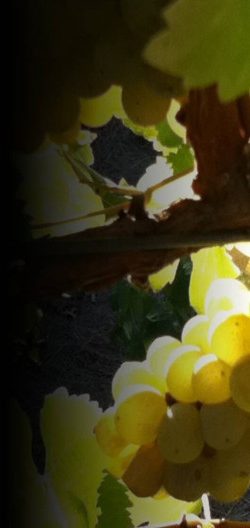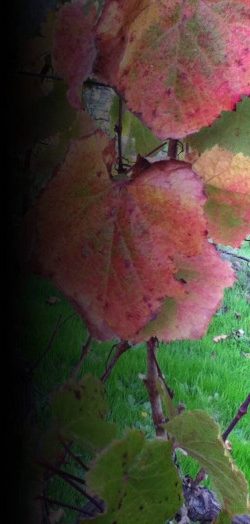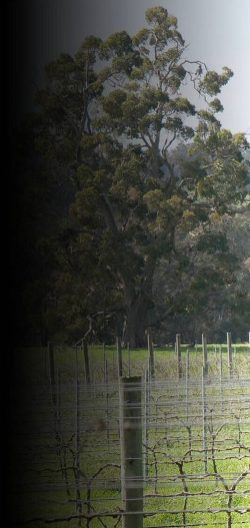Autumn
Picking
During Autumn we make our red and white wines. The first step of making the Red wine is to hand pick the grapes.
By hand picking the grapes we make sure that only good quality, ripe grapes are included with no leaves, frogs, mice or possums. Bunches are placed into the crates to ensure that the grapes are not broken until they go through the crusher. We do not add any sulphur (preservative) to the grapes at this stage.
Crushing
The second stage of making Red wine is the Crushing. The crates full of grapes are loaded onto the back of the ute or truck and are then taken from the vineyard to the winery located about 1km away. Once the crates get to the winery they are offloaded onto a pallet ready for processing. As each crate is tipped into the destemmer crusher any leaves that happened to fall into the crates are taken out along with any unripe/bad bunches that were accidently put into the crate. In the destemmer crusher, the grapes are taken off the stalk and then lightly crushed just enough that the grape is broken not squashed. This will allow the yeast to be able to get into the grape and change the sugar to alcohol.
Primary Fermentation
Once the grapes have been crushed and pumped into the large fermentation tanks, we add our desired yeast and allow the grapes to ferment for about a week. In the process of fermentation, the yeast consumes the sugar and converts it to carbon dioxide and alcohol. During the fermentation stage the grape skins will float to the top forming what is known as a cap. So that the skins do not dry out too much and add bitter characters to the wine, the skins need to be plunged back into the juice four times a day, every day for a week. To start off with this is a relatively easy task because the juice has not started to separate out from the grape but as the process continues the skins will form quite a hard, thick layer that can be a challenge to pushed through. By the end of the week, the skins will be softer and will fall to the bottom more easily. Also during this stage, the winery becomes filled with the wonderful smells of fermenting grapes. It is a fantastic smell, similar to strawberry jam, passionfruit, summer fruits all mixed in together.
Pressing
This is probably the messiest stage of the process often with red wine splashing everywhere. The wine is pumped out of the fermentation tanks into the press. It is important to bucket out a layer of skins first so that it can act a bit like a filter. The wine is pumped into the cage part of the press until it is full. During this process there is a lot of what is called free run juice. This is the wine that comes out without any pressing. There is often a small amount of residual sugar left in the wine at this stage. The wine is unoaked and tastes soft and fresh. I have often heard people say that wine tastes the best at this stage but unfortunately it doesn’t last like that. Once the cage is full of skins it is then locked into the press and a plate is lowered down on top to apply a pressure of up to 150kpa. When we have extracted as much wine from the skins as we are happy with, the ‘cake’ is then taken out to the tip truck and emptied off. The whole process is repeated several times until all of the wine has been pressed. There will come a time during the process when the tank is too empty for the pump to be able to suck out the last bit. This is when we put on our special ‘only used in the clean winery not out in the sheep and cow paddock’ gumboots and climb into the tank to bucket out the last of the wine.
Fermentation
The last stage of vintage is the cleanup and malolactic fermentation. All of the skins and stalks during vintage are dumped out onto our tip truck which is then dumped in a composting pile on the farm. The sheep help to process the compost by eating most of it. All the crates from picking are cleaned and put away for another year. All of the equipment is given a thorough cleaning before being put to bed. All of the wines have been put into storage bags to allow them to finish off their last little bit of fermenting and to settle out the larger particles from the initial press. In a couple of months the wine will be taken out of the bags and put into maturation tanks with oak. All the sediment will be left behind.


